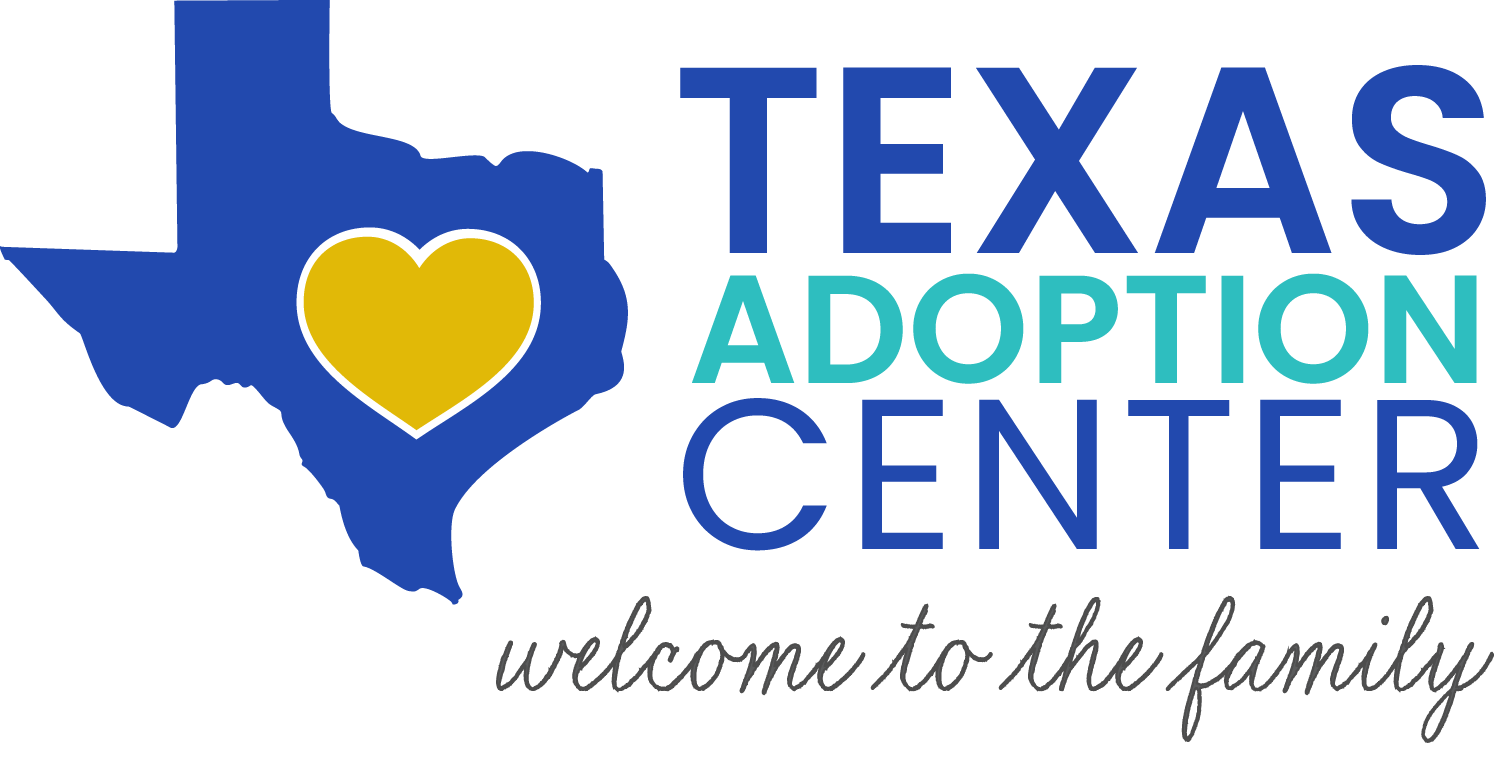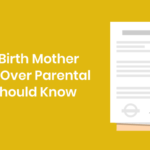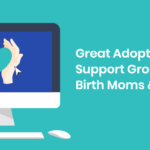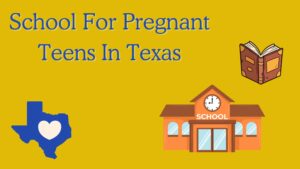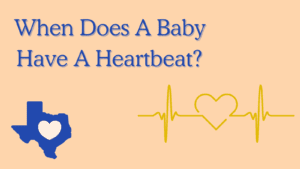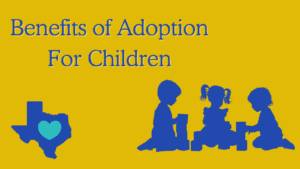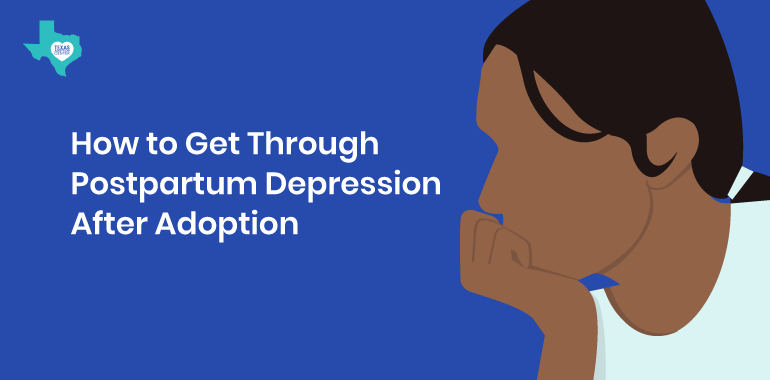
Postpartum depression is a very real issue many birth mothers face. While approximately 70-80% of women experience the “baby blues,” the reported rate of clinical postpartum depression (PPD) among new mothers is between 10-20%. Although many people think that postpartum depression appears right after birth, this isn’t always the case.
While many cases of postpartum depression do occur within four to six weeks after birth because of the extreme hormonal changes, symptoms can appear up to 18 months after birth. Unfortunately, many birth mothers believe that they can’t experience postpartum depression after adoption. However, postpartum depression after adoption is just as common.
One of the most effective ways to deal with postpartum depression after adoption is to know the signs. This article will discuss the signs and symptoms of PPD. We’ll also cover some tips to help you get through postpartum depression and provide helpful resources and support for birth mothers after adoption.
What Is Postpartum Depression?
Having a baby is a life-changing event that comes with significant emotional changes. Add abrupt hormonal changes to the mix, and it’s no surprise that postpartum depression is common among birth mothers.
Postpartum depression is defined as an episode of major depression associated with childbirth. Statistics from a recent study found that 1 in 7 women may experience postpartum depression in the year after giving birth. With approximately 4 million live births each year in the United States, almost 600,000 women are diagnosed with postpartum each year. Still, many cases of PPD go undiagnosed and untreated, meaning statistics are probably much higher than reported.
While awareness of PPD has grown significantly in recent years, delayed or late-onset postpartum depression isn’t discussed as often. Women can experience PPD up to 18 months after delivery, even later if they experience chronic hormone imbalances. Unfortunately, delayed postpartum depression is associated with a decrease in treatment options and support for birth mothers.
Can Women Experience Postpartum Depression After Adoption?
Postpartum depression is also common amongst birth mothers who place their babies for adoption. As you juggle the emotions of unplanned pregnancy, make tough decisions, and deal with hormonal changes, it can be challenging to identify the symptoms of PPD. That’s why it’s critical to know the signs and talk to your doctor if you think you may be struggling with PPD.
Signs and Symptoms of Postpartum Depression
The symptoms of regular and delayed PPD are the same. However, the symptoms of postpartum depression and the “baby blues” are different. The “baby blues” refers to the feelings of sadness, worry, fatigue, and self-doubt that nearly 80% of birthmothers feel after delivery. This typically only lasts for a few days or weeks and resolves on its own.
In postpartum depression, estrogen and progesterone levels decrease significantly after delivery. As you work to balance the physical and emotional demands of giving birth and placing your baby for adoption, these changes can affect the chemistry of your brain. Physical exhaustion, sleep deprivation, self-esteem issues, and the emotions of making the best decision for you and your baby play a significant role in developing delayed PPD.
Postpartum depression after adoption is similar to other episodes of depression that can occur during life. While the “baby blues” typically go away within 10-14 days, PPD is characterized by a daily loss of interest and joy in life that lasts. The most common signs include:
- Loss of interest in activities you used to enjoy
- Weight gain or loss that isn’t associated with your diet
- Changes in your appetite
- Unexplained crying or constant crying
- Fatigue
- Loss of energy
- Feelings of guilt, worthlessness, or hopelessness
- Changes in your sleep patterns
- Suicidal thoughts or attempts
Risk Factors for PPD
Postpartum depression can impact any birth mother, but certain risk factors make the condition more likely to occur. These include:
- Previous history of mental health issues
- Stressful life events before, during, or after pregnancy
- Having a baby that requires a NICU stay
- Traumatic childbirth
- Previous history of addiction
- Financial instability
- Having a baby with congenital disabilities or other health complications
Unplanned or unwanted pregnancies are also a risk factor for PPD, making the condition common among birth mothers who place their baby for adoption.
How To Get Through Postpartum Depression After Adoption
If you experience signs of PPD after giving birth or at any time over the 18 months following, it’s important to talk to your doctor. Here are some other ways to take care of yourself when you’re dealing with postpartum depression:
1. Be Kind to Yourself
Many women with PPD are hard on themselves as they struggle to deal with their feelings. It’s important to remember that you are not alone, and your sadness is not a weakness. If all you want to do is watch movies or sleep, that’s what you should do. Be kind to yourself during this difficult time. Everyone has a different experience with PPD, and no two stories are the same. Acknowledge your feelings and do whatever it takes to cope with them in the best way you can.
2. Focus on Your Health
It might be difficult to take care of yourself during this time, but focusing on your health will help you through the challenging times. Eat and sleep well. Try to get in some light exercise daily, with the approval of your doctor. When you focus on your physical health, it is easier to deal with your mental health.
3. Avoid Isolation
The last thing you probably want to do at this time is to go out, but getting out of the house is essential. Many women with PPD isolate themselves. Do your best to maintain relationships with your family and friends. It’s important to be surrounded by people who want to help you during this time.
4. Talk To a Professional
It can’t be stressed enough that postpartum depression is a medical condition. That means there are several medications you can take to help ease the symptoms. Since the first step towards the most effective treatment is a diagnosis, talk to your healthcare provider.
If you prefer to discuss how you’re feeling with a counselor, ask your local adoption center to recommend someone with experience in PPD after adoption. At Texas Adoption Center, we provide valuable resources and support for birth mothers after adoption. We can also pair you with the right support group to meet other women undergoing similar experiences.
5. Be Patient
Every case of postpartum depression is different, and you will overcome your PPD in your own time. That’s why it’s important to be patient. Even with medication, therapy, or other support, you won’t feel better overnight. Give yourself as much time as you need to feel better. If your treatment isn’t working or you’re concerned with your recovery, talk to your doctor for advice.
Find the Support and Resources You Need at Texas Adoption Center
Postpartum depression is a common condition that many women experience after childbirth. Even if you are placing your baby for adoption, you can experience postpartum depression at any time from birth up to 18 months after delivery.
If you want to discuss your symptoms with a professional counselor, need help with finding a doctor who specializes in PPD, or want access to supportive resources, we’re here to help! Texas Adoption Center has helped countless women navigate the emotions of unwanted pregnancy, adoption, and postpartum depression. Contact us today to get the support you deserve!
You can get in touch with us online or by phone or text at (512) 893-7943.
